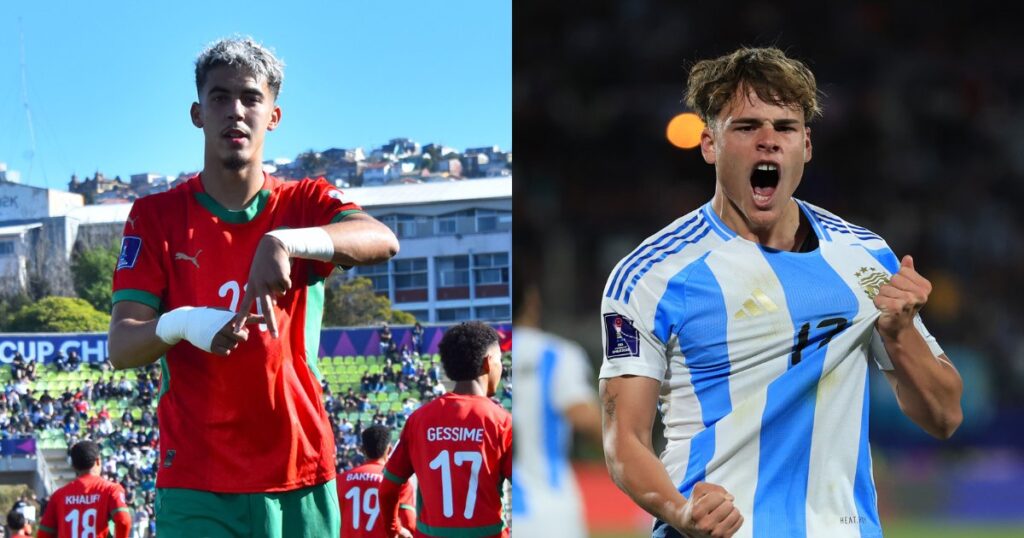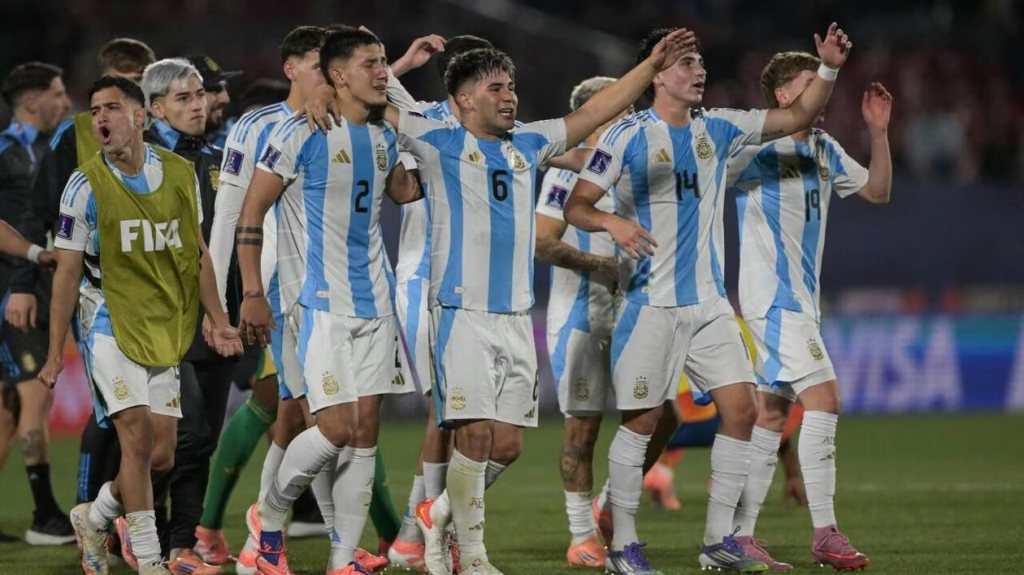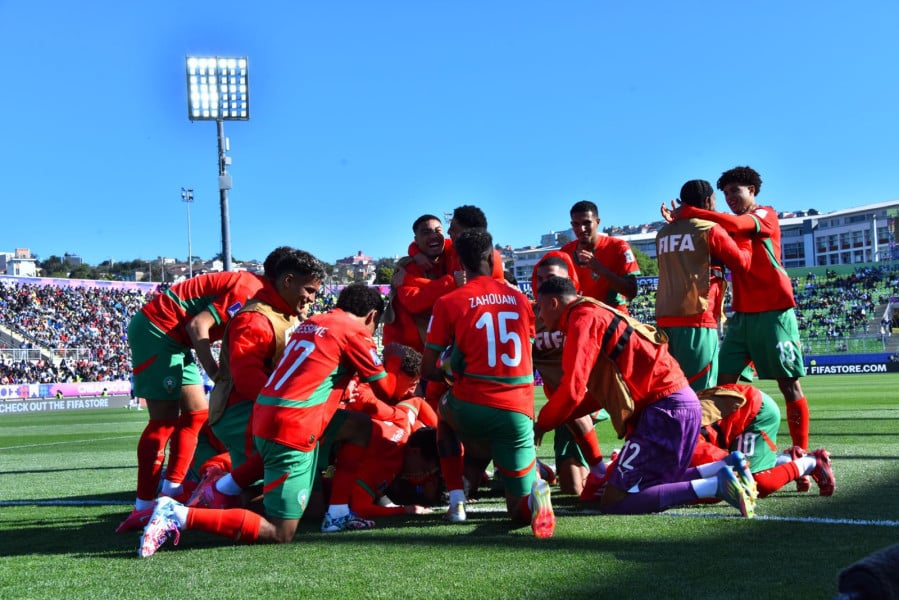
On 19 October 2025 (in Santiago, Chile) the U20 football world will focus on the final match between Argentina and Morocco in the FIFA U-20 World Cup. This encounter is about more than just football: it has implications for youth development, national brand value, commercial banking relationships, and the economics of sport. As young talents take centre stage, the interplay between sporting ambition, financial investment and economic return becomes clear.
In this article we explore the following elements:
- Tournament context and path to the final for both teams.
- Football-analysis of Argentina vs Morocco: strengths, weaknesses and what to expect.
- The financial dimension: broadcasting, sponsorship, youth player valuations and banking.
- Economic impact for host country, participating nations and youth systems.
- Broader take-aways: football as a vehicle for economic soft power and investment.
- Conclusion: why this U20 final matters beyond the pitch.
1. Tournament context and path to the final
Argentina’s route
Argentina enters the final as one of the most successful U20 nations. They have reached the final multiple times — this is their eighth final appearance. Wikipédia+1 In the 2025 edition they proceeded through the group stage and knockout rounds with strong performances. For example they defeated Colombia 1-0 in the semi-final thanks to a goal from Mateo Silvetti. Bayer 04 Leverkusen Fussball GmbH+2Morocco World News+2 Their record in this tournament is impressive: scoring 15 goals and conceding only 2 up to their semi-final. Morocco World News

Morocco’s rise
Morocco’s U20 side made history by reaching their first ever U20 World Cup final. Morocco World News+2Gulf News+2 They topped their group ahead of Spain and Brazil (a big statement). In the semi-final they stunned France, drawing 1-1 after extra time and winning 5-4 on penalties. flashscore.ph+2ESPN.com+2 This achievement means Morocco now joins only two other African nations (Nigeria and Ghana) to reach a U20 final. flashscore.ph
Why this final matters
- For Argentina: a chance to reaffirm their dominance in youth football, to renew their pipeline of senior players, and to enhance their brand.
- For Morocco: a landmark opportunity to lift a world trophy, to raise the profile of Moroccan youth football, and to attract investment (domestic and international) into their football infrastructure.
- For the sport: youth tournaments like this function as a marketplace of talent, where players’ valuations, transfers, sponsorship deals and even banking relationships begin to crystallize.
2. Match preview: Argentina vs Morocco — strengths, weaknesses and dynamics
Tactical styles & key players
myvaultwise.comArgentina tend to rely on technical excellence, fluid attacking play and a legacy of youth development. With Alejo Sarco already on four goals in the tournament (as reported) and Silvetti contributing in the knockout rounds, Argentina carry offensive firepower. Bayer 04 Leverkusen Fussball GmbH On the defensive side, their record of only two goals conceded shows solidity.
Morocco on the other hand bring resilience, tactical discipline and a “nothing to lose” mindset. Their journey included defeating major teams and succeeding under pressure (e.g., their penalty shoot-out win over France). The goalkeeper Abdelhakim El Mesbahi emerged as an unlikely hero, coming on late and saving the decisive penalty. ESPN.com

Strengths & opportunities
- Argentina: strong youth talent, deep footballing infrastructure, and experience in finals.
- Morocco: momentum, motivation, under-dog status which can galvanize performance, and the chance for massive national support.
Weaknesses & risks
- Argentina: expectation weighs heavily, and youth tournaments can be unpredictable; a lack of hunger or complacency could be a danger.
- Morocco: less experience in finals, perhaps less depth, and the challenge of staying calm under immense pressure.
Psychological and game-day factors
The pressure of a final is significant. Morocco are playing in uncharted territory for their youth side; Argentina know what it takes, which can be both an advantage and a burden. The environment (stadium, crowd, time zone) may favour either side depending on mindset.
Prediction & scenarios
While statistical history favours Argentina, football is not played on paper. Morocco can win if they execute a disciplined defensive strategy, maintain high intensity, and exploit set-pieces or counter-attacks. Argentina will aim to dominate possession, impose structure and finish chances.
3. Financial dimension: broadcasting, sponsorship, youth player valuations & banking
Broadcasting & sponsorship revenue
Major youth tournaments increasingly attract global audiences. Broadcasting rights, streaming deals and sponsorships (kits, tournament branding) generate substantial revenue. For nations and clubs, this revenue stream supports footballing infrastructure and youth academies. For example, hosting a semi-final or final elevates exposure, which can boost negotiation power for next cycles.
Youth player valuations & transfers
The U20 World Cup serves as a global showcase. Young players who perform well can spike in market value, which translates into higher transfer fees, larger agent commissions, and bigger sponsorship deals. Clubs investing in youth development view youth tournaments as risk-managed opportunities for return on investment.
Banking & financing of football development
Football academies and federations often rely on financing from banks, federations or sovereign funds. Financial institutions see football as a brand vehicle, a community engagement tool and a long-term investment. Morocco’s emergence may prompt increased banking investment into youth development infrastructure (training centres, talent scouting, sports science). For example, Moroccan clubs may seek partnerships with banks for infrastructure loans or sponsorships.

Economic ripple effects
When a youth national team reaches a final, ancillary financial activities ensue: merchandising (shirts, scarves), hospitality, tourism (fans travelling), activation of local football markets (sponsors, vendors). These feed into national GDP growth in micro-terms, and into the broader sporting economy.
Risk and return in football investment
For federations, investment in youth football (academies, coaching, infrastructure) is similar to investing in an asset class: high cost, long horizon, uncertain return. But a successful tournament run can act as a “liquidity event” — analogous to a startup IPO — where value generated (brand, player contracts, sponsors) can be monetised. For Morocco, this final offers such an event.
4. Economic impact: host country, participating nations and youth systems
Host country benefits
With Chile hosting the 2025 U20 World Cup, the staging of a final featuring a rising nation like Morocco and a traditional power like Argentina creates significant exposure. Hotel occupancy, local transport usage, media presence, and tourism all contribute. Infrastructure upgrades (stadiums, training facilities) have lasting social and economic value.
National football economies
Argentina: Youth success reinforces the football ecosystem: clubs recover players’ value, the national federation strengthens its brand, and sponsorship deals multiply. This can feed into senior success, which in turn enhances international commercial deals (kit deals, broadcast rights).
Morocco: The economic impact is even more dramatic. Reaching the final puts Moroccan football on global radar. That can attract foreign investment (e.g., in academies, training partnerships), raise the export value of players, and stimulate domestic football markets (match attendance, youth participation, local sponsorships). For a country seeking economic diversification, football can become an exportable asset (players, camps, training methodology).
Wider developmental impact
Youth football success can influence social capital: more kids engage in sport, healthier lifestyles, community development. For Morocco, which has invested in sport as part of national development, this final may justify further state and private investment in sport infrastructure — which in turn creates jobs, demand for coaching services, sports science, equipment, and facility operations.
Macro-economic analogy
Imagine the youth football sector as a “growth sector” in the national economy. Investment today (academies, coaching) yields returns tomorrow (successful players, sponsorships, brand value). The tournament final functions like a milestone signalling market readiness — akin to a tech startup’s Series B funding round. For Morocco, the final is a catalyst; for Argentina, it’s a reaffirmation of strong fundamentals.
5. Broader take-aways: football as vehicle for economic soft power and investment
Soft power and national branding
International sport success enhances a country’s image. For Morocco, becoming world-finalists at U20 level elevates its status in global football, and by extension its cultural diplomacy. Argentina reinforces its image as a football powerhouse. This brand value attracts tourism, foreign direct investment, and can aid wider national agendas (trade, diplomacy).
Sport, banking, and financing innovation
Football tournaments present opportunities for financial institutions: sponsoring teams, co-branding youth academies, consumer credit tied to ticketing, merchandising financing, digital fan-engagement platforms. Banking products such as youth talent finance (advance of future transfer fees) could become more mainstream. For example, an academy signs a promising player; a bank offers financing secured against expected future transfer revenue.
Investing in intangible assets
Players, brand value, fan loyalty: these are intangible assets. Financial institutions today are more comfortable evaluating intangible value (brands, digital communities). Youth football success contributes to a federation’s intangible value, which can be leveraged for financing or partnerships.
Risk mitigation and diversification
Just as investors diversify, football federations diversify by investing in youth basketball, women’s football, etc. The success of a U20 final appearance means that a country’s football “portfolio” is yielding returns beyond senior team performance. From a finance perspective, the youth tournament is a risk diversification tool: even if senior national team under-performs, youth success keeps momentum and value creation alive.
6. Conclusion: Why this U20 final matters beyond the pitch
The final between Argentina and Morocco is more than a match; it is an intersection of sport, economics and finance. For Argentina, strong youth performance translates into sustained talent supply, economic value and national brand reinforcement. For Morocco, the event may be transformational: attracting investment, raising national profile, and accelerating sport-driven economic development.
From a financial-economic viewpoint, youth tournaments like this embed multiple value-creation pathways: broadcasting revenue, player transfer markets, sponsorship deals, banking and infrastructure financing, national branding and soft-power gains. The U20 final is in essence a capital-investment event — and the return comprises not only a trophy, but player development, financial flows, and societal impact.
As fans tune in for the match, policymakers, club executives, bankers and investors should also be watching. The outcome may influence youth football’s direction, talent valuations, and wider economic implications in both nations.
In short: the final is a micro-cosm of modern sport’s fusion with finance and economics. It’s not just about who lifts the trophy—it’s about who leverages that moment into lasting value.

